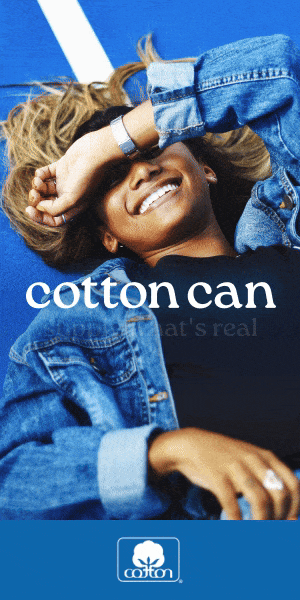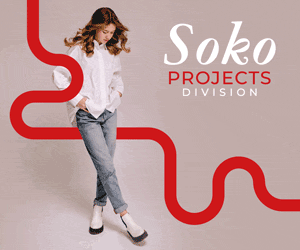Biotech indigo at a tipping point

Disrupting an industry that produces some 70,000 tonnes of petrochemical indigo annually is no small feat. Innovators in synthetic biology claim they have already ticked key boxes: achieving purity levels comparable to conventional indigo and scaling production capacity—at least to a degree. Convincing mills and brands to switch to these biobased alternatives is the next box they need to tick.
Denim and indigo, the very basis of jeans. But while cotton is natural, the dye that gives denim its signature blue is overwhelmingly synthetic. Petrochemical indigo accounts for 99% of the market, a dominance it has held for more than a century, despite the hazardous substances used in its production and toxic by-products. Producing the deep blue dye via fermentation instead of from fossil fuels would clearly be a net positive for the industry, and a better fit for our cotton fibre jeans. This is the vision driving companies developing biobased indigo. Like many biotech innovations, progress has been slow, but momentum is building.
The few ‘brewed’ indigos that have reached commercial scale have been in development for a decade or more. Chloris founder Dr Lei Sun has been working on a microbe-made blue dye for 13 years, since his PhD programme. “It took us ten years to increase yield from milligrams to kilogrammes, and beyond,” he tells Inside Denim. The Utah-based company operates a factory in China, with 300-tonne bioreactors capable of producing 10,000 tonnes annually. Dr Sun says that hundreds of tonnes have already been shipped to mills. “We are ready, and the mills are, too, as soon as the brands say go!”
Research into biobased dyes began at Pili, based in France, in 2015. Production of its first fermented dye, Eco-Indigo, began in 2024. With partner mill Orta, in Turkey, US-based Citizens of Humanity has successfully launched the first jeans dyed with the novel pigment in January 2025. Jérémie Blache, CEO and co-founder says that 100,000 units have been dyed. A small, but significant, step towards industrial scale. Pili intends to increase production in 2026, enough to dye a few hundred thousand items, and eyes one million Eco-Indigo-dyed jeans in a not-so-distant future.
Newcomers to this field include Nordic Blue. The Danish company was founded in 2024 and is developing an “eco-friendly alternative for dyeing denim”. Indian fermentation specialist Fermbox Bio, founded in 2022, also has a Synbio-Indigo in its portfolio.
However, scientist/entrepreneurs seeking to develop bacteria-made indigos are struggling. Huue, in San Francisco, has been working on a biotech indigo since 2018, when the company was called Tinctorium. AGI Denim, in Pakistan, trialled the dye in 2023, and it was featured in a capsule collection by UK designer Patrick McDowell this spring. Synovance, based in France, is shuttering this fall, mainly due to lack of funding.
Company founder Efthimia Lioliou says that positive trials were underway and a small factory with a 1,000-litre fermenter was running, but support from investors and industry failed to materialise. She had been working on this project for a decade before incorporating the company in 2017.
Blues and indigos
Pili’s Eco-Indigo shares the exact same molecular structure as the natural and synthetic varieties. Jérémie Blache, co-founder and CEO, says that what distinguishes them is their level of purity. Petrochemical indigo typically achieves 95% purity, while natural indigo ranges from 15% to 55%. Pili’s Eco-Indigo has a purity greater than 90%, making it a drop-in solution for mills. Citing instances in which plant-derived indigo has been found to be made from a blend of natural and petrochemical pigments, he says Pili’s Eco-Indigo “is controllable, auditable, traceable and high performance”.
Chloris’ bacteria-made pigment, Claessen Blue, is blue, but not technically indigo. “It doesn’t have the same molecular structure as indigo, but it can produce nuances that are as dark,” says Dr Sun. His interest was sparked by microbes that naturally generate a blue hue, first documented by German scientist H. Claessen in Berlin in the late 19th century. “He did fantastic work identifying a natural microorganism that produces the dye, and this allows our process to be highly efficient,” says the synthetic biologist who has been studying natural dyestuffs for 18 years. Pigments found in nature often pose challenges, he notes, as many are toxic and can damage the very cells producing them in fermentation tanks. By choosing a pigment produced by a natural, non-modified organism, he says that Chloris can achieve higher yields. “This enables us to lower costs and bring our price close to that of synthetic indigo.”
Fermbox Bio introduced its Synbio-Indigo in 2024, joining the ranks of biotech firms engineering microbes to produce indigo through genetic modification. Using precision fermentation, the company says it achieves high purity and consistency in its dye. “Our product matches traditional indigo,” says founder Subramani Ramachandrappa, “but with the added advantages of better sustainability, traceability, and quality.”
Petrochemical indigo is said to cost around $5 per kilogramme. This low price point poses a major challenge for bacteria-made indigo, as scaling production is the only path to lowering costs. Yet maintaining living cultures in tanks or reactors becomes increasingly complex at larger volumes, requiring sophisticated engineering to ensure stable temperature, even nutrient distribution, and consistent culture media.
“There are ways to reduce costs through continuous culture, reusing media, using alternative sugars instead of glucose. But these will not happen overnight!” Ms Lioliou tells Inside Denim.
“Scaling is the difficult part,” agrees Dr Sun. “The fermentation process involves a series of complex parameters and improper control can lead to abnormal microbial metabolism and even cell death.” He points out that all fermented materials face the same issues. Chloris feeds its microbes glucose derived from corn (~80%), which he says allows it to lower the price.
Up till now Pili has outsourced the production of its pigment, but expects, one day, to have its own factory, and thus reduce costs. For now, it is working with a network of partners in Europe, sourcing sugar exclusively from European biomass, says Mr Blache. The company has joined several research projects working on ‘second generation’ sugars derived from wood, paper, agro-industry waste and even textiles. “We would like to be the first company to use textile waste as feedstock, creating a truly circular solution,” he says.
Making the switch
Dyeing is widely recognised as one of the most polluting stages in textile and apparel manufacturing. The advent of an indigo pigment having a radically lower environmental footprint compared to its petrochemical counterpart should incite change. While cost remains a critical factor in a price-sensitive market, it raises the question: What proportion of a product’s total price does dye actually represent?
In discussions with brands and mills, Jérémie Blache, at Pili, says many different reasons are cited as potentially triggering change. Responsibility, which encompasses sustainability, and a desire to implement best practices, is one. “We are creating a new standard that is reliable,” he says. Traceability is an issue that luxury brands tend to focus on. Innovation is another draw that he cites. Keeping ahead of future laws and regulations “can be strategic for a brand”. He believes that extended producer responsibility and environmental scores will come, at some point, and will “level the playing field by making it more expensive to do business for less sustainable companies”.
Differentiation is another key motivator for adoption. “Brands and mills have few ways to differentiate in a bold and convincing manner, beyond style and price, and biotech indigo is one such strong differentiation point. It is also a fairly easy notion to understand for consumers,” he adds.
The tipping point for dyeing mills and brands is sustainability and safety, says Dr Sun. “The wastewater discharged from our factory contains no organic solvents, no heavy metals, no aniline, only small amounts of sugars, amino acids and norganic nitrogen sources. It can even be used as fertiliser.”
Dr Sun has spent years learning about dyeing, and says that Claessen Blue presents several advantages for mills: a lower working pH, requiring less supplementary salts for reduction, and a lower oxidation-reduction potential or ORP, a measure used to monitor water quality.
Claessen Blue has specific performance properties beneficial to dyeing mills and brands. Unlike indigo, it resists yellowing during storage, and this, he says, is a critical issue for brands. Since indigo is dyed in layers, Claessen Blue can be applied as a top layer to protect the true denim blue. Instead of using bleaching chemicals, he says that the dye can be washed by enzymes, at a lower temperature, thus preserving the elastane content and saving laundry costs.
Chloris thus promises dyeing mills convenience and savings. “Mills are motivated to switch because of the savings on resources, chemicals and even wastewater treatment costs,” says Dr Sun. They do, however, need to be persuaded to switch from a dye they know well to one they have no experience with. It is a new molecule, which means new recipes need to be devised. “We are the ingredient, not the chef,” he says. “We need the dye technicians to make Claessen Blue as beautiful as indigo.”
The innovative natural microbial dye is being tested by by denim mills in Turkey and China. Chloris is also working with brands, citing Gap and Kontoor.
While convincing brands is not an easy task, Dr Sun insists on the good story they can derive from using a biobased dye that biodegrades into amino acids, while offering savings in dyeing, laundry processes and anti-yellowing. “This is our most important contribution. We are not expensive and could even be cheaper than synthetic indigo,” he says.
Dyeing mills have been reaching out to Pili, says Pierre-Yves Bollé, Pili’s chief business officer, looking for innovation and differentiation. If Citizens of Humanity was keen to adopt the novel biotech dye, it is due in part to the company’s in-house manufacturing. “It would be good to see brands that are truly dedicated to better practices benefit from the added effort they put into making their products.”
As with many next-gen materials and dyes, the industry is slow to switch to solutions that address the most glaring issues in jeans manufacturing. Though not all, as seen at Citizens of Humanity, and at Levi’s, which has adopted Nature Coatings’ BioBlack, a pigment derived from wood waste, for one of its commercial ranges. While these alternatives may carry a trivial additional cost, their environmental benefits, along with the positive impact on the industry’s image, could be far-reaching.
Pili has been working with denim mills to finetune its Eco-Indigo, notably with Turkey-based Orta.
Photo: Vincent Blanchard













